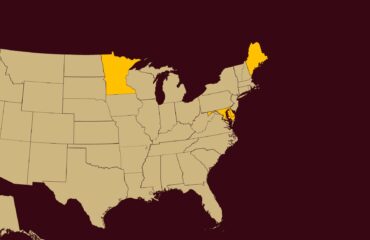State laws vary – know the basics so you can help guide your clients.
Life is rarely predictable. That’s especially true for new parents or anyone caring for a loved one who is sick or aging. Raising a newborn or caring for loved ones often means taking time off work for doctor’s appointments or taking a half day if there’s a health emergency. Intermittent paid family and medical leave (PFML), in states where PFML is available, can provide flexibility for workers and help ease some of the financial burden. That’s especially important in today’s economy.
Sandwich Generation Struggles to Juggle Work and Caregiving
A recent study from Carewell analyzed the challenges of the sandwich generation – caregivers in their 40s and 50s often taking care of older parents and younger children at the same time. Some of the most revealing statistics?
- More than 85% of caregivers also have another job, with 70% working full time
- More than 1/3 of caregivers who work are on-site at the business (i.e., in the office)
- Nearly half (49%) said a flexible work arrangement made caregiving easier
Caregivers Experience Financial Struggles
The survey also revealed the financial challenges of many caregivers, especially those in the sandwich generation.
- 75% struggled to save for retirement
- 63% reported living paycheck to paycheck
- 51% had credit card debt
- 46% struggled to afford essential bills
However, only 17% said they wished they had more support from their employers. This could be an indication of how far we’ve come in providing help to those caring for young children or other family members – although clearly, there’s more that can be done in this regard.
As more states mandate PFML programs and employers also introduce their own benefits to stay competitive, workers are finally starting to get the help and support they deserve.
But, in order to take advantage of the help, they need to understand what’s available. Often, they will turn to their HR department or seek help from insurance brokers if they need to know if they can file a claim.
How Intermittent Leave Can Help
Intermittent paid family and medical leave allows employees to take time off with partial pay to care for a loved one or manage their own off-the-job illness or injury with doctor’s appointments, treatments, therapy, or even rest. By filing for intermittent paid leave, workers can take days – or in some states, hours – off when they need them most.
Similarly, states that permit a reduced schedule may allow employees to work partial days or a reduced workweek to manage their health or medical treatments. For instance, someone who has physical therapy appointments twice a week may work a reduced schedule of Monday, Wednesday and Friday.
A worker who needs to take a loved one with cancer to chemotherapy treatments can take a day off every two weeks without having to file a new claim. This can help caregivers maximize their income (especially if they’ve used all their PTO) and be there for their family as needed.
States with Intermittent Paid Leave
Rules vary in different states. The states with mandatory PFML programs that are eligible for privatization and allow intermittent leave are:
- Massachusetts
- Oregon
- Colorado
- Connecticut
- New York
- New Jersey
The chart below shows a brief overview of intermittent leave requirements in different states where PFML is actively in effect and employees can make claims now. Stay tuned to The DBL Center blog and subscribe to our newsletter to stay up to date on these rapidly changing laws as more states roll out PFML programs.
| Massachusetts | Up to 60-minute blocks; (minimum 15-min. increments); Reduced leave schedule allowed |
| Oregon | No minimum hours, but employer notice is required |
| Colorado | Full days only; hourly increments if medically necessary |
| Connecticut | Employer can set minimum; reduced schedule allowed |
| New York | Full days only; cannot have more than 3 months between leave days or it triggers a new claim |
| New Jersey | Full days only |
Why Brokers Need to Know
Filing claims for PFML can get complicated – adding intermittent leave or reduced schedules into the mix makes it challenging even for employee benefits experts to keep it all straight. It helps to have a grasp of the programs and the possibilities available to help guide your clients, manage claim continuity and avoid paperwork surprises.
The DBL Center is your back-office staff with the carrier relationships to secure the best premium rates and top-notch, white-glove service. Trust us to understand the intricacies of employee benefits so you can stick to what you do best: selling insurance policies to your clients.
FAQ:
What Is Intermittent Paid Leave?
Intermittent paid leave, in states that offer it, allows employees to take time off in blocks, as needed, rather than consecutively, without filing a separate Paid Family and Medical Leave claim each time.
Which states offer intermittent paid leave?
Massachusetts, Oregon, Colorado, Connecticut, New York and New Jersey offer intermittent paid family or medical leave through state-funded or private plans and allow workers to take intermittent paid leave in various time blocks, ranging from minutes to full days.
References:
https://www.mass.gov/news/latest-guidance-from-the-department-of-family-and-medical-leave
https://www.ctpaidleave.org/how-ct-paid-leave-works





